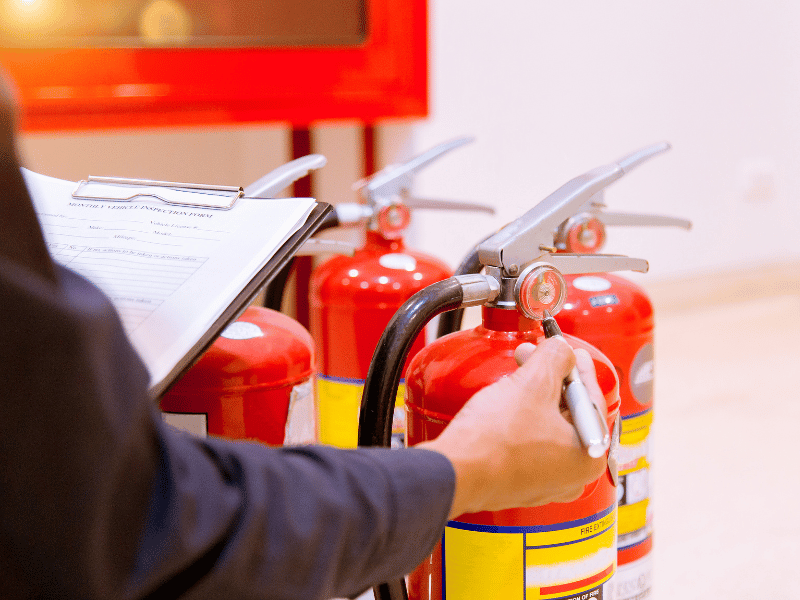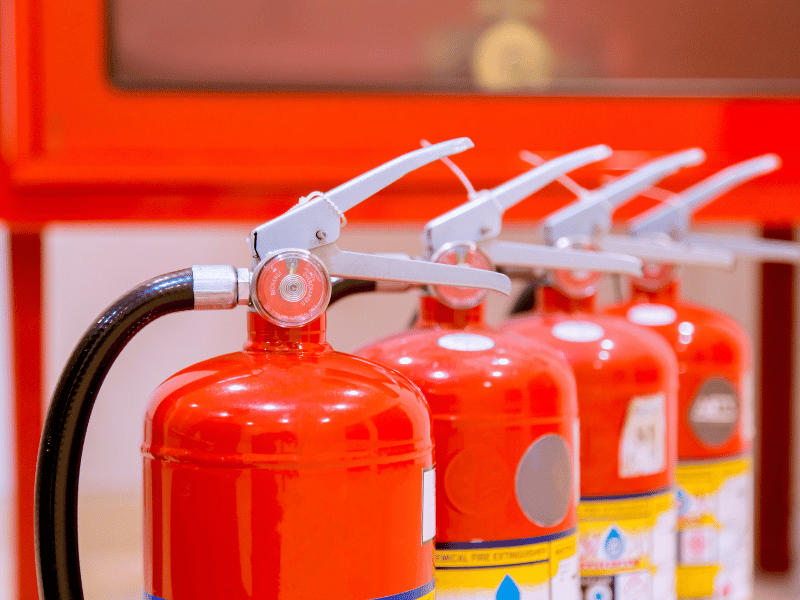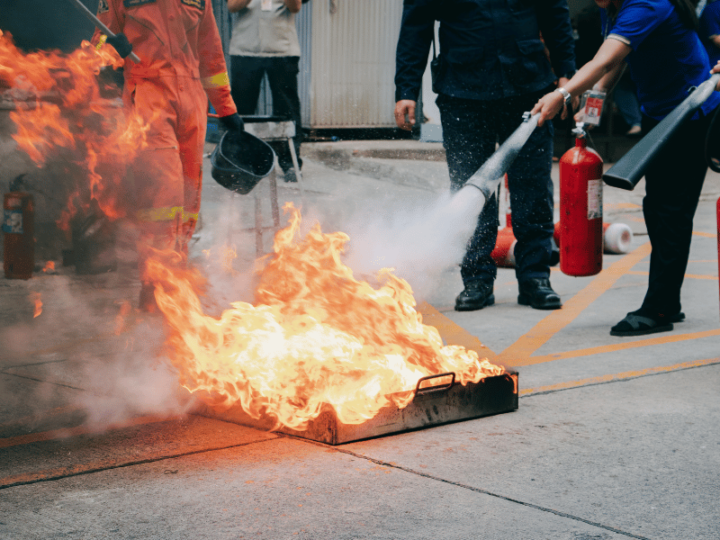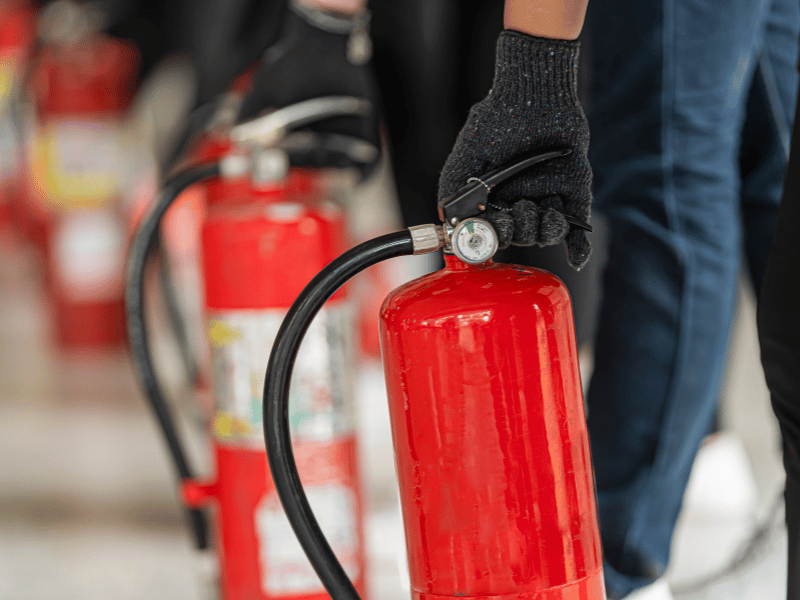OSHA, the agency that oversees workplace health and safety, has some important rules for fire extinguisher training. These rules cover where extinguishers should be, their proper usage, and how often they should undergo inspection and maintenance.
The OSHA standard on fire protection also identifies fire extinguisher training requirements, which is the primary focus of this article.
Table of Contents

Basics of OSHA Fire Extinguisher Requirements for Employers
The Occupational Safety and Health Standards (OSHA) standard 1910.157 provides guidelines on portable fire extinguishers in the workplace. Employers should ensure that fire extinguishers are readily available in case of emergencies and that they work properly. In addition to this, fire extinguishers should be tested and approved before use. Also, it is equally important for employers to provide their employees with education and training on the proper use of fire extinguishers.
However, there are exclusions to the rule:
- Suppose a workplace has a written fire safety policy that says everyone must immediately leave when there’s a fire alarm. This policy includes plans for what to do in an emergency and how to prevent fires. In such cases, the employer doesn’t have to follow all the rules about having fire extinguishers—unless there’s a specific rule saying otherwise.
- If there’s a plan that says only designated people can use fire extinguishers and everyone else has to leave when there’s a fire alarm, then the employer doesn’t have to follow OSHA’s distribution rules. The distribution rules talk about how employers should choose and place fire extinguishers in the workplace, depending on the fire type.

OSHA Regulations for Fire Extinguisher Training
OSHA requires training and education on fire extinguisher use in workplaces. The education program familiarizes employees with the general principles of fire extinguisher use and the hazards associated with early-stage fires.
Fires that are just beginning to develop are small and can often be controlled using portable fire extinguishers. If employees can promptly recognize and respond to these early-stage fires, workplaces can prevent fires from spreading, mitigating the possibility of causing more extensive damage and harm.
The OSHA fire extinguisher training requirements are simple. You can read more about it on 1910.157(g), but here’s a summary:
Educational program
If the employer provides fire extinguishers for employees, they must also provide fire extinguisher training. The training should teach them how to use a fire extinguisher and what dangers they might face when fighting small fires.
Timing of fire extinguisher training
This rule says that employees should undergo training when they start their jobs. Training should then be repeated at least every year so employees are ready to recognize and respond to fires at all times.
Training for designated employees
If certain employees are chosen to use firefighting equipment as part of the emergency plan, they need specific training for that equipment. For example, you can assign a designated team responsible for operating fire extinguishers as part of the company’s emergency response plan. They should then have specific training on how to use fire extinguishers effectively.
Timing of training for designated employees
Like the rule on general fire extinguisher training, designated employees should be trained when first assigned the role. Afterward, training should be repeated at least once every year.

Hands-on training with fire extinguishers
Do employees need hands-on training with fire extinguishers? It depends. Curtis Chambers, an OSHA expert, writes in the OSHA training blog that OSHA doesn’t specifically require hands-on practice. At the very least, employees should be taught how to use a fire extinguisher and the risks of early-stage fires, but hands-on training isn’t necessary.
However, if an employer designates employees to use fire extinguishers, those employees need specific training. OSHA requirements for fire extinguishers don’t mandate starting actual fires during the training, but trainees should get a chance to use the type of extinguisher they will be using in real emergencies. Chambers warns employers to be cautious about starting fires for practice, as it can be risky and might even be against the law in some places.
See also: OSHA training quick guide
Exemptions in education and training
Chambers says there are cases when fire extinguisher training isn’t necessary at all. If the workplace emergency action plan and fire prevention plan tell employees to evacuate the premises immediately in case of a fire and that no one should use the fire extinguisher, then employers don’t need to provide fire extinguisher education and training to employees. This situation assumes there’s no specific requirement for trained portable fire extinguisher users.
Note that it’s essential to have a written safety policy for exemptions in the fire extinguisher rules.







